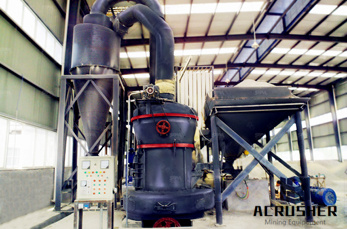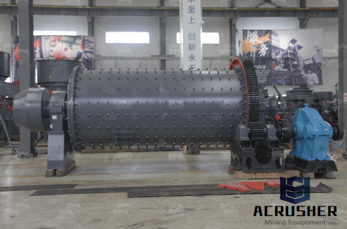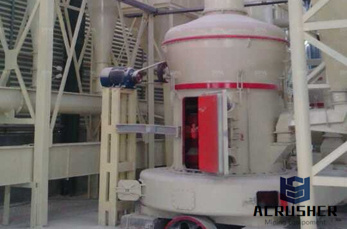Stainless Steel Chemical Resistance Chart CE Hayata
Warning The information in this chart has been supplied to Hayata by other reputable sources and is to be used ONLY as a guide in selecting equipment for appropriate chemical compatibility.
 WhatsApp)
WhatsApp)
Warning The information in this chart has been supplied to Hayata by other reputable sources and is to be used ONLY as a guide in selecting equipment for appropriate chemical compatibility.

Stainless Steel Chemical Compatibility Chart: Check the chemical compatibility of Stainless Steel with various chemicals, solvents, alcohols and other products.. Shop Stainless Steel. Please Note: The information in this chart has been supplied by reputable sources and is to be used ONLY as a guide in selecting equipment for appropriate chemical compatibility.

Calcium carbonate scale is one of the most common inorganic scales which deposits on the surface of oil and gas production facilities. This causes significant loss of production and ultimately leads to shut down of production lines if not properly managed. There has been a great amount of research on calcium carbonate deposition

Calcium Carbonate ★★★★ AExcellent Calcium Chloride ★★ CFair Calcium Hydroxide ★★★ BGood Calcium Hypochlorite ★★ CFair Calcium Nitrate ★★ CFair Calcium Oxide ★★★★ AExcellent ... 304 Stainless Steel Corrosion Compatibility Chart. 2 ★★★★ AExcellent

Other calcium carbonate applications include its use in building construction, plant and crop fertilizers, food additives, water and sewage treatment, ceramics, pharmaceuticals and cosmetics. The process The following paragraphs describe a carbonization process for precipitated calcium carbonate (PCC) production from limestone.

Feb 21, 2017· Although the production of precipitated calcium carbonate (PCC) using the indirect carbonation of BF slag is a process that has managed to attract much attention7,8, the hydrothermal conversion of slag for the production of zeolitic minerals is a technology that has been studied and developed only during recent years9,10,11. However, in none of ...

ABSTRACT: We have studied nucleation and crystal growth of calcium carbonate on hard surfaces, stainless steel and silica, at different temperatures, in relation to the corresponding bulk processes, using scanning electron microscopy (SEM), Xray diffraction (XRD), and ellipsometry. In the bulk solution, a mixture of all three calcium ...

Calcium carbonate scale is one of the most common inorganic scales which deposits on the surface of oil and gas production facilities. This causes significant loss of production and ultimately leads to shut down of production lines if not properly managed. There has been a great amount of research on calcium carbonate deposition studies, but most of these studies have been on understanding ...

The mechanism of crystal adhesion and growth of calcium carbonate on the stainless steel plate surface from supersaturated solution was investigated at

Jul 10, 2017· The transformation of CO2 into a precipitated mineral carbonate through an ex situ mineral carbonation route is considered a promising option for carbon capture and storage (CCS) since (i) the captured CO2 can be stored permanently and (ii) industrial wastes (, coal fly ash, steel and stainlesssteel slags, and cement and lime kiln dusts) can be recycled and converted into value .

Dec 16, 2019· 6x 1000 m3 stainless steel storage tanks Gpi Tanks designed and produced six stainless steel tanks for our client specializing in the production of calcium carbonate pigments, fillers and granules of the highest quality. Tanks were constructed in stainless steel 304L and duplex steel .

Onequarter ounce (about 4 teaspoons) of calcium carbonate reduces acidity in one gallon by about %. ing may occur because of the production of CO2. Do not use more than one ounce per gallon. Wait 24 hours and rack wine. Calcium carbonate is also used in beer to increase the temporary hardness of water.

Mar 25, 2002· Electrochemical synthesis of calcium carbonate coatings on stainless steel substrates. ... Calcite CaCO 3 has been electrocrystallized on stainless steel substrates by the galvanostatic cathodic reduction of aqueous calcium bicarbonate solutions. The deposition is controlled by pH changes occurring close to the cathode due to electrogeneration ...

ELECTROLYTIC PRODUCTION OF CALCIUM METAL By J. J. Lukasko 1 and J. E. Murphl ABSTRACT The Bureau of Mines developed an alternative electrochemical process for the production of calcium metal. The current industrial practice is costly, complex, and inefficient. ... and an alumina sheathed 3mmdiam stainless steel rod

The Effect of Mineral Deposits on Stainless Steel. Authors; Authors and affiliations ... and the much less insoluble calcium carbonate polymorphs are the salts most frequently encountered. 1,2 The deposits that are formed greatly reduce heat transfer causing energy losses or material damage especially when coupled with corrosion. In all cases ...

In this work, a technoeconomic assessment for producing calcium carbonate from steelmaking slag was made. The studied case consisted of a stainless steel plant generating slag and a paper plant consuming both PCC and GCC (ground calcium carbonate) situated at a relatively close distance.

Dried and weighed The increased mass of the 304 stainless steel cups after the experiment was the amount of calcium carbonate scale attached to the cup Surface scale inhibition efciency is calculated as follows h Dm1 Dm2 Dm1 100 1 where Dm1 g is the increased weight of the stainless steel cup in the blank experiment and Dm2. See Details >

Natural waters that flow over limestone regions absorb calcium carbonate and metal ions such as magnesium. This is called hard water and is well known for the cleaning difficulties it causes. It leaves thin deposits of calcium carbonate on the steel surface that prove difficult to .

Calcium carbonate is used in the production of calcium oxide as well as toothpaste and has seen a resurgence as a food preservative and color retainer, when used in or with products such as organic apples. Calcium carbonate is used therapeutically as phosphate binder in patients on maintenance haemodialysis. It is the most common form of ...

A uniform coating of calcium carbonate, deposited on the metal surfaces, physically segregates the metal from the corrosive environment. To develop the positive LSI required to deposit calcium carbonate, it is usually necessary to adjust the pH, alkalinity, or calcium content of the water.

Lime and Calcined Dolomite for Use in Steel Plant. Lime is a versatile compound. ... Calcium oxide reacts with carbon dioxide to form calcium carbonate. The reaction is driven to the right by flushing of carbon dioxide from the mixture as it is released. ... In the stainless steel making process lime is used in the AOD (argon oxygen ...

In this work, a concept for producing calcium carbonate from argon oxygen decarburisation (AOD) slag was further developed. In addition, its economic and environmental feasibility was evaluated. In the studied case, a stainless steel plant generating AOD slag and a paper plant requiring calcium carbonate are situated at a relatively close distance.

Calcinor products in the steel industry. As we have already seen, both calcium oxide and calcium hydroxide play an important role throughout the whole steelmaking process: in electric arc furnaces (EAF), in blast furnaces, in AOD converters, in refining, in continuous casting, etc.

Nov 04, 2019· Calcium, limescale or water spots: No matter what you call them, deposits and hard water spots on a stainless steel sink can leave it looking dirty, even after you''ve just cleaned it. These mineral deposits, left behind when tap water evaporates, are far more obvious in a steel sink than in a white, porcelain sink.
 WhatsApp)
WhatsApp)